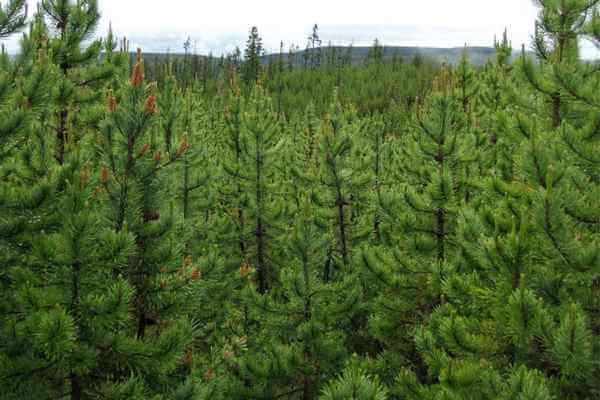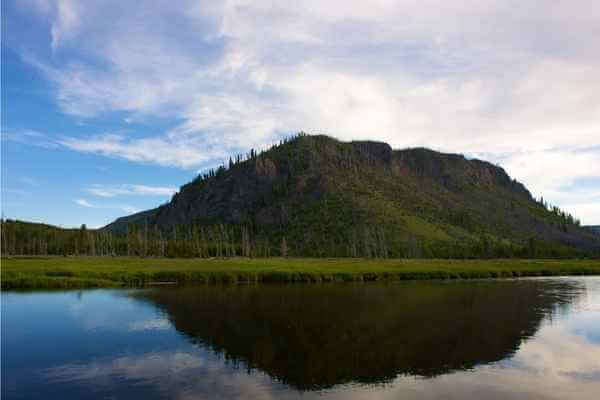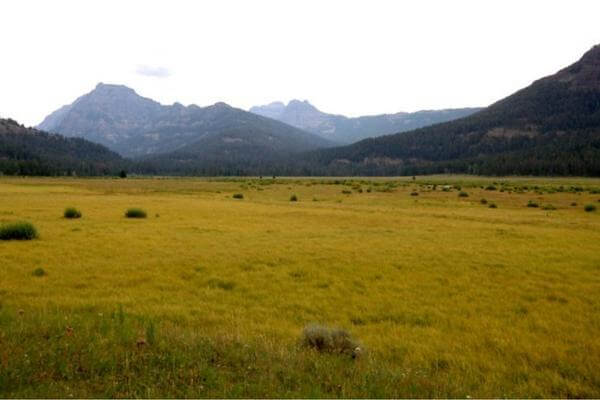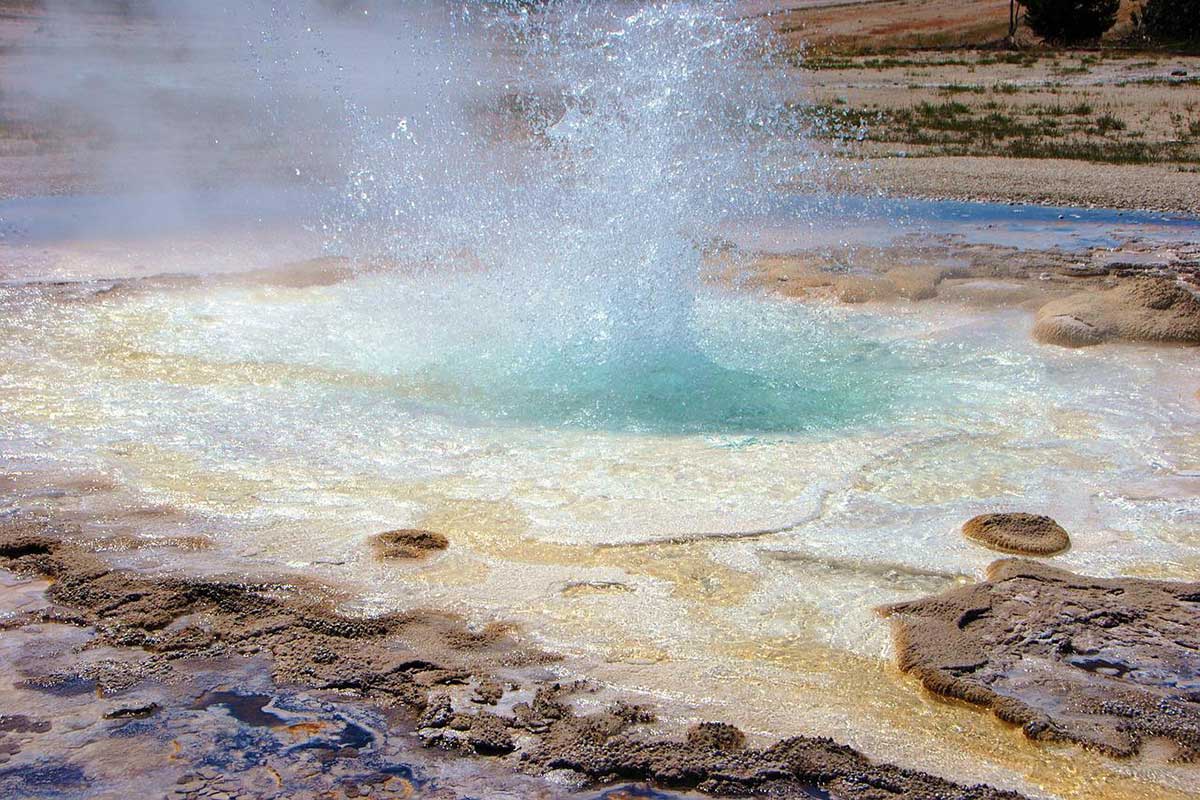Yellowstone National Park spans over three states (Wyoming, Montana, and Idaho) and is well known for being home to half of the geysers worldwide. Ecosystems are areas where a community of living organisms and non-living elements, such as rocks, exist together. The multiple ecosystems in Yellowstone National Park contribute to the diversity of the area.
Besides the famous geysers, you can find lakes, forests, valleys, rock outcrops, and more stunning landscapes in the park. These natural areas combine to form the core of the Greater Yellowstone ecosystem. Read on to learn more about the types of smaller ecosystems in Yellowstone National Park that make it a marvelous natural wonder.
6 ecosystems in Yellowstone National Park
1. temperate-zone ecosystem
Yellowstone National Park is described as a temperate-zone ecosystem. This means there are obvious differences in temperature during the seasons. The summers are warm to hot and winters cool to cold. At Yellowstone, summer temperatures range from 70 to 80 degrees Fahrenheit. During the winter, daytime temperatures are between 20 to zero degrees Fahrenheit and the lowest recorded temperature at night was -66 degrees.
The Greater Yellowstone Ecosystem, where the national park is located, is one of the largest nearly intact temperate-zone ecosystems worldwide. This means the animals and plants in the area are basically the same as before humans arrived in America. Typically wildlife you can see at the park are bears, moose, elk, wolves, bison, badgers, otters, and foxes. Yellowstone actually has the largest bison population on public land in the U.S.
2. Geyser ecosystem

Yellowstone National Park houses one of the largest geyser ecosystems in the world. The park has over 10,000 hydrothermal features, with over 500 being geysers. The most famous geyser is Old Faithful, located in the Upper Geyser Basin. This cone geyser ejects steam and between 14,000 to 32,000 liters of hot water with each eruption. The eruption can be over 180 feet and around 204 degrees Fahrenheit.
Geyser eruptions are a popular tourist destination and a way to learn about volcanic eruptions. However, the same geothermal energy driving the geyser activity can also be a clean source of electricity to power businesses and houses.
Besides geysers, other hydrothermal features at Yellowstone National Park are hot springs, mud pots, and fumaroles. Some flower species you can find near thermal areas include shooting stars, yellow monkey flowers, and Columbia monkshood.
3. Freshwater ecosystem
Freshwater ecosystems include habitats, such as lakes, ponds, rivers, creeks, and streams, which all exist in Yellowstone National Park. These habitats are home to various freshwater animals as well as provide resources for humans. The park has around 1,000 rivers and streams that create 2,500 miles of running water. There are also over 600 lakes and ponds in the park.
Yellowstone Lake is the largest high-altitude lake in the U.S., located 7,733 feet above sea level. This natural lake has six major fish species:
- Longnose dace
- Cutthroat trout
- Redside shiners
- Longnose suckers
- Lake chub
- Lake trout
One of the most popular animals living in Yellowstone’s freshwater ecosystems is the Yellowstone otter. They are a favorite for visitors watching wildlife and live along the shorelines of rivers and lakes. The otters eat clams, whitefish, crayfish, frogs, and other small animals in their habitat.
4. Forest ecosystem

Forest ecosystems cover around 80 percent of the Yellowstone National Park. Higher elevations have older forests where there are also a lot of volcanic rocks called andesite. There are plenty of subalpine firs, Engelmann spruce, limber pine, and lodgepole pine trees. Aspen and cottonwood also thrive in the cooler park temperatures.
In the northern, lower elevation region of the park, you can find a lot of Douglas-fir trees. Some of them have been in the forests for several 100 years and have fire scars from historical fires. Their thick barks make them tolerant of low-intensity fires.
Bobcats, foxes, wolves, weasels, and skunks are common in the various forest habitats. Forest ecosystems also consist of the soils and decomposers that help break down dead animals and plants for nutrients in the soil.
5. Mountain ecosystem

From the base to the jagged peaks, there are various communities of life in mountain ecosystems. There are less vegetation, food sources, and oxygen at higher altitudes. Despite this, some animals and plants thrive in the high elevations of this ecosystem.
For example, the bighorn sheep can tolerate extreme weather and have hooves designed to help them climb rocky terrains. There are also plenty of birds in Yellowstone’s mountainous habitats, including:
- Mountain chickadees
- Mountain bluebirds
- Boreal owls
- Bald eagles
- Peregrine falcons
- Osprey
6. Grassland ecosystem

A grassland ecosystem is a treeless area with plenty of plants ranging from grasses and shrubs to wildflowers. In Yellowstone National Park, grasslands are mostly in the lower elevations and range from areas of thousands of acres to small glades.
This habitat is also a popular region for wildlife to graze and find food, including elks, mule deer, bison, and pronghorns. Bighorn sheep will also find food in the lower elevations of the grasslands during the winter. Some of the beautiful wildflowers you can find in Yellowstone’s grasslands include:
- Yampa
- Ladies tresses
- Sulfur buckwheat
- Cinquefoil
- Wild flax
- Bluebells
- Larkspur
